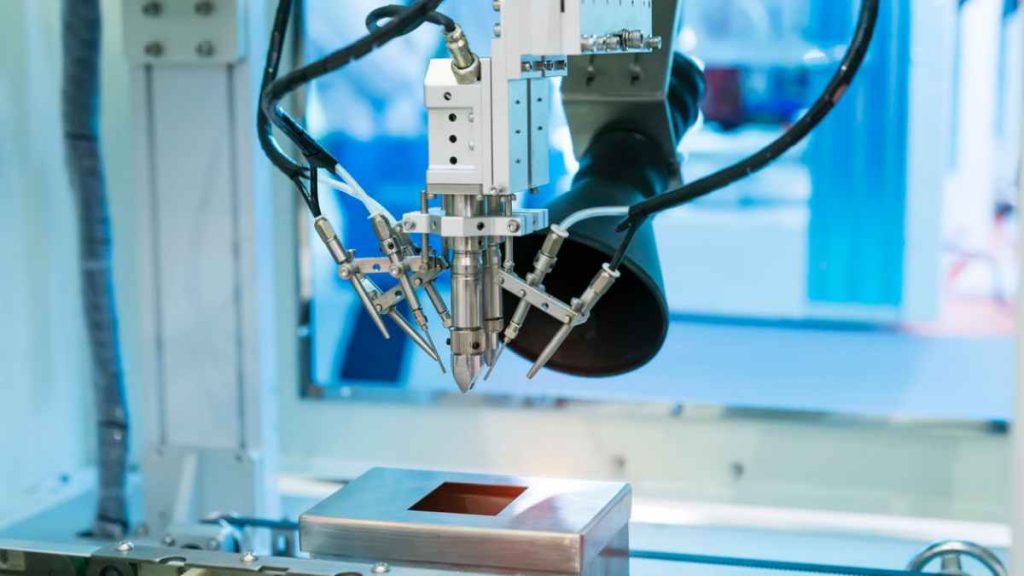Automated optical inspection (AOI) is a modern process used by manufacturers to ensure the quality of the components they produce, in particular, printed circuit boards (PCB).
The most common type of AOI system is a two-dimensional one. This uses 2D cameras to capture images of the components under inspection. For the most part, this technology is able to detect most surface-level and solder defects, as well as missing or misaligned components.
However, as with most technologies, AOI has continued to evolve, making way for 3D automated optical inspection. With the ability to take inspections that bit further and ensure even greater accuracy and quality control, 3D AOI is growing in popularity right now.
In this guide, we’re going to take a look at what 3D automated optical inspection is, how it works and the key benefits of choosing these systems. Read on to find out if this is the right solution for your electronic manufacturing business.
What is automated optical inspection?
Let’s first take a look at how 2D AOI systems work. The process uses cameras to capture images as the components are inspected. These rely on conventional imaging and pattern recognition to spot and highlight any defects or problems.
During the process, a 2D camera will scan the PCB using a light source to illuminate the product, a lens will then direct the light source to the correct place and finally, a camera to capture images of the product. This is all done automatically as the AOI system works its magic.
However, 3D automated optical inspection takes this one step further by inspecting PCBs and other electronic components in three dimensions.
What is 3D AOI and how does it work?
3D automated optical inspection systems don’t just rely on standard lights. They use multi-stage lighting instead for adequate light without shadows. This reduces the risk of inaccurate or incorrect results.
Not only that, but as well as the typical lenses and cameras, 3D AOI also relies on vertical and side cameras to get a better view of the entire board. By doing this, these systems can tell if components are skewed or flipped.
What’s more, some of the more advanced 3D systems can even recognise excessive or uneven solder joints. And, unlike 2D systems, 3D AOI will also use laser triangulation or structured light projection to map out the product being inspected.
Laser triangulation projects a line onto the surface of the PCB or component and uses a camera to capture this image. By analysing the images and looking for distortion in said line, 3D AOI systems can use extreme precision to identify any defects.
As laser technology can take a bit longer, some systems choose structured light projection instead.
This method works by projecting a pattern of light over the surface of the component and capturing an image. If there are any distortions within the pattern, this signifies a defect on the board. While this might be slightly less precise than laser technology, it is much faster.
The benefits of 3D automated optical inspection
As well as being more advanced than 2D AOI, 3D inspection also has a huge range of benefits, which is why this is growing in popularity with many manufacturers. Some of the key benefits of choosing 3D AOI include:
- Providing a fully automated and very accurate inspection process
- Detecting a wider range of defects than 2D alternatives
- Reducing the risk of approving PCBs or other components that actually have small, undetected defects
- Speeding up the inspection process and keeping up with high-volume manufacturing processes. Something that human quality control cannot do
- Saving time, money and resources by spotting defects earlier on in the process
- Allowing you to improve the efficiency of your inspection and quality control across the organisation
The final advantage of 3D AOI that we haven’t outlined above is that these systems are less affected by variations in the light and colour of the components they are scanning. This means they are more versatile and capable of inspecting a wide range of components without the need to adjust.
The limitations of 3D AOI
There are clearly a huge number of benefits to using 3D AOI, but in the interest of balance, we’re going to finish by looking at the few possible limitations of these systems.
Because 3D AOI systems are more complex, this means they tend to be more expensive than 2D systems. That being said, most manufacturers save money in the long run thanks to better quality control and less time and resources wasted.
Not only that, but these systems require more computational power to process the 3D data. This can make them feel slower and more complex than 2D systems.
